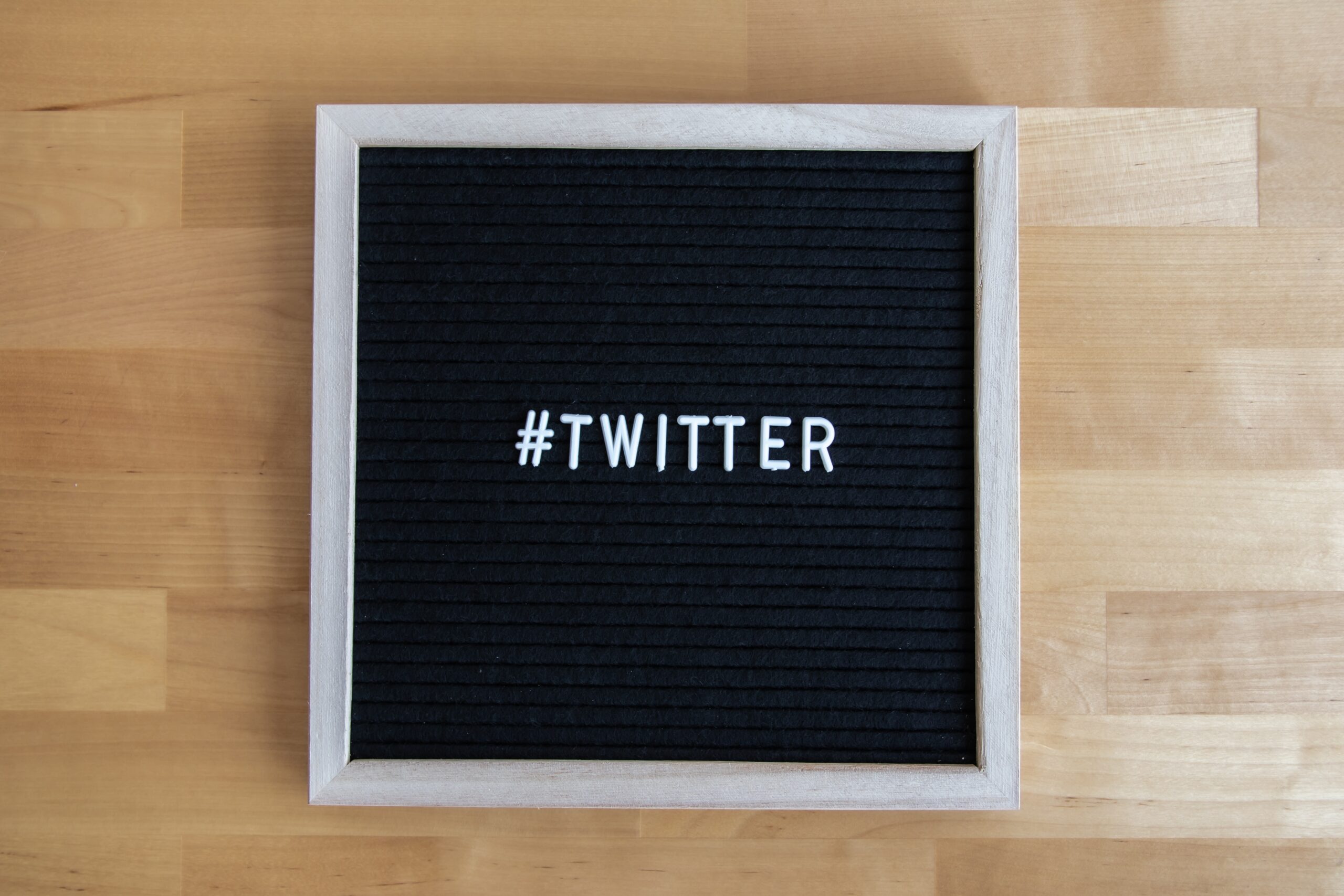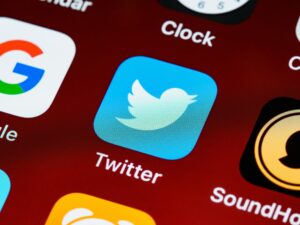
Is 100k Impressions on Twitter Good? An Expert’s Opinion
100k impressions on Twitter is a significant milestone. It means that your content is reaching a large and engaged audience. This can lead to increased brand awareness, website traffic, leads, and sales.
However, whether or not 100k impressions is good for you depends on your goals and objectives. If you are trying to increase brand awareness, then 100k impressions is a great start. However, if you are trying to generate leads or sales, then you may need to aim for higher impressions.
In this blog post, I will share my expert opinion on whether 100k impressions on Twitter is good. I will also discuss the importance of Twitter impressions in a marketing strategy, how to interpret 100k impressions, tips for boosting impressions, and how to track impressions.
Understanding Twitter Impressions
Twitter impressions are the number of times your tweet is displayed in a user’s feed. They are not the same as reach, which is the number of unique users who have seen your tweet.
Twitter impressions are calculated based on the number of times your tweet is displayed in a user’s feed, regardless of whether they see it multiple times. For example, if a user scrolls past your tweet and then comes back to it later, it will count as two impressions.
The Importance of Twitter Impressions in a Marketing Strategy
Twitter impressions are important because they measure the reach and visibility of your content. The more impressions your tweets have, the more people are seeing your brand and learning about your products or services.
High Twitter impressions can lead to a number of benefits, including:
- Increased brand awareness
- More website traffic
- More leads and sales
- Improved customer relationships
- Better SEO results
How to Interpret 100k Impressions
Achieving 100k impressions on Twitter is a significant milestone. It means that your content is being seen by a large and engaged audience.
However, it is important to note that impressions are just one metric for measuring the success of your Twitter marketing strategy. You should also track other metrics, such as engagement rate, reach, and website traffic, to get a more complete picture of your performance.
For example, if you have 100k impressions but a low engagement rate, it means that people are seeing your tweets but not interacting with them. This could be a sign that your content is not relevant or engaging to your audience.
On the other hand, if you have 100k impressions and a high engagement rate, it means that people are seeing your tweets and interacting with them. This is a good sign that your content is relevant and engaging to your audience.
Tips for Boosting Your Twitter Impressions
There are a number of things you can do to boost your Twitter impressions, including:
- Create and share high-quality content. Your tweets should be informative, engaging, and visually appealing.
- Use relevant hashtags. Hashtags are a great way to get your tweets seen by more people. When you use relevant hashtags, your tweets will show up in the search results for those hashtags.
- Interact with your followers. Like and retweet other users’ tweets, and reply to comments and mentions.
- Run contests and giveaways. Contests and giveaways are a great way to generate excitement and engagement around your brand.
How to Track Your Twitter Impressions
You can track your Twitter impressions using the Twitter Analytics dashboard. To access the Twitter Analytics dashboard, go to your Twitter profile and click on the “Analytics” tab.
The Twitter Analytics dashboard provides a variety of insights into your Twitter performance, including impressions, reach, engagement rate, and more.
FAQ About Twitter Impressions
Here are some frequently asked questions about Twitter impressions:
- What is the difference between impressions and reach?
Impressions are the number of times your tweet is displayed in a user’s feed, while reach is the number of unique users who have seen your tweet.
- How can I tell if my Twitter impressions are good?
Whether your Twitter impressions are good or not depends on your goals and objectives. If you are trying to increase brand awareness, then high impressions are a good thing. However, if you are trying to generate leads or sales, then you may want to focus on other metrics, such as engagement rate and website traffic.
- How can I increase my Twitter impressions?
There are a number of things you can do to increase your Twitter impressions, such as creating and sharing high-quality content, using relevant hashtags, tweeting regularly, interacting with your followers, and running contests and giveaways.
Understanding Twitter Impressions
Twitter impressions are the number of times your tweet is displayed in a user’s feed. They are not the same as reach, which is the number of unique users who have seen your tweet.
Twitter impressions are calculated based on the number of times your tweet is displayed in a user’s feed, regardless of whether they see it multiple times. For example, if a user scrolls past your tweet and then comes back to it later, it will count as two impressions.
Twitter impressions are an important metric for measuring the reach and visibility of your content. The higher your impressions, the more people are seeing your brand and learning about your products or services.
What Are Twitter Impressions?
Twitter counts the number of times your tweet is displayed in a user’s feed, which is called impressions. This is different from reach, which is the number of unique users who have seen your tweet. Twitter calculates impressions based on the number of times your tweet is displayed in a user’s feed, regardless of whether they see it multiple times. For example, if a user scrolls past your tweet and then comes back to it later, it will count as two impressions.
Here is an example:
- You post a tweet with an image and a link to your website.
- Your tweet is displayed in the feeds of 1,000 of your followers.
- 500 of your followers scroll past your tweet without seeing it.
- 250 of your followers see your tweet and click on the link to your website.
- 250 of your followers see your tweet and reply to it.
In this example, your tweet has 1,000 impressions because it was displayed in the feeds of 1,000 of your followers. However, your tweet only has a reach of 750 because only 750 unique users saw your tweet.

How Are Twitter Impressions Calculated?
Twitter calculates impressions by tracking the number of times a tweet is displayed in a user’s feed. This includes times when the tweet is displayed in the user’s home timeline, search results, or hashtag feeds.
Twitter impressions are not the same as reach, which is the number of unique users who have seen a tweet. A single tweet can have multiple impressions if it is seen by the same user multiple times.
Here are some of the factors that influence Twitter impressions:
- Who you follow: Twitter will show you tweets from the people you follow, as well as from accounts that Twitter thinks you might be interested in.
- What you interact with: Twitter will also show you tweets from accounts that you interact with, such as accounts that you like, retweet, or reply to.
- What’s trending: Twitter will also show you tweets that are trending, or that are popular with other users.
- Your search history: If you have searched for a particular topic on Twitter, Twitter will be more likely to show you tweets about that topic.
- Your location: Twitter will also show you tweets that are relevant to your location.
Twitter uses a complex algorithm to calculate impressions, and the exact factors that are considered are not publicly known. However, by understanding the factors that influence impressions, you can take steps to improve your impressions and reach a wider audience.
Here are some tips for improving your Twitter impressions:
- Post high-quality content: Twitter users are more likely to engage with tweets that are informative, engaging, and visually appealing.
- Use relevant hashtags: Hashtags are a great way to get your tweets seen by more people. When you use relevant hashtags, your tweets will show up in the search results for those hashtags.
- Tweet regularly: The more often you tweet, the more likely your tweets are to be seen by your followers.
- Interact with your followers: Like and retweet other users’ tweets, and reply to comments and mentions.
- Run contests and giveaways: Contests and giveaways are a great way to generate excitement and engagement around your brand.
The Importance of Twitter Impressions in Your Marketing Strategy
Twitter impressions are an important metric for measuring the reach and visibility of your content. They are the number of times your tweet is displayed in a user’s feed.
Twitter impressions play a vital role in a marketing strategy. By understanding how impressions work and how to improve them, you can reach a wider audience and achieve your marketing goals.
It is important to note the difference between impressions and potential reach. Impressions are the number of times your tweet is displayed in a user’s feed, while potential reach is the number of unique users who could see your tweet.
Your potential reach is determined by the number of people who follow you. However, not all of your followers will see every tweet that you post. This is why it is important to focus on improving your impressions.
Engagement rate is another important metric for measuring the success of your Twitter marketing strategy. Engagement rate is the percentage of users who interact with your tweet by liking, retweeting, or replying to it.
Twitter impressions and engagement rate are closely related. Tweets with high impressions are more likely to have high engagement rates. This is because people are more likely to engage with tweets that they see in their feeds.
Twitter Impressions Vs. Potential Reach
Twitter impressions and potential reach are two important metrics for measuring the success of your Twitter marketing strategy. However, it is important to understand the difference between these two metrics.
Twitter Impressions
Twitter counts the number of times your tweet is displayed in a user’s feed, including times when the tweet appears in the user’s home timeline, search results, or hashtag feeds. A single tweet can have multiple impressions if a user sees it multiple times. For example, if a user scrolls past your tweet and then comes back to it later, it will count as two impressions.
Potential Reach
Potential reach is the number of unique users who could see your tweet. This is determined by the number of people who follow you.
However, it is important to note that not all of your followers will see every tweet that you post. Twitter’s algorithm determines which tweets to show to users based on a variety of factors, such as the user’s interests, engagement history, and the time of day.
Example:
Let’s say you have 1,000 followers on Twitter. You post a tweet that is displayed in the feeds of all 1,000 of your followers. This tweet has 1,000 potential reach.
However, let’s say that only 500 of your followers actually see your tweet. This tweet has 500 impressions.
How Twitter Impressions & Engagement Rate Interact
Twitter impressions and engagement rate are two closely related metrics. Impressions are the number of times your tweet is displayed in a user’s feed, while engagement rate is the percentage of users who interact with your tweet by liking, retweeting, or replying to it.
Tweets with high impressions are more likely to have high engagement rates. This is because people are more likely to engage with tweets that they see in their feeds.
For example, if you have a tweet with 100 impressions and 10 engagements, your engagement rate would be 10%. However, if you have a tweet with 1,000 impressions and 100 engagements, your engagement rate would also be 10%.
How Impressions & Engagement Rate Influence Each Other
Twitter’s algorithm takes into account both impressions and engagement rate when deciding which tweets to show to users. This means that tweets with high impressions and high engagement rates are more likely to be seen by more people.
This creates a positive feedback loop. Tweets with high impressions are more likely to have high engagement rates, and tweets with high engagement rates are more likely to have high impressions.
Combined Impact on Visibility & Success
Twitter impressions and engagement rate are both important metrics for measuring the visibility and success of a Twitter account.
Tweets with high impressions are more likely to be seen by more people, and tweets with high engagement rates are more likely to be seen by people who are interested in the content.
This means that accounts with high impressions and high engagement rates are more likely to reach a wider audience and build a following.
Decoding the Numbers: What Do 100k Impressions Mean?
100k Twitter impressions means that your tweet has been displayed in the feeds of 100,000 users. This is a significant number of people, and it means that your content has been seen by a large and engaged audience.
What Counts as Good Impressions on Twitter?
Whether or not 100k impressions is good for you depends on your goals and objectives. If you are trying to increase brand awareness, then 100k impressions is a great start. However, if you are trying to generate leads or sales, then you may need to aim for higher impressions.
The Relationship Between Impressions and Engagement
Twitter impressions and engagement rate are two closely related metrics. Twitter impressions count the number of times your tweet is displayed in a user’s feed, while engagement rate measures the percentage of users who interact with your tweet by liking, retweeting, or replying to it.
Tweets with high impressions are more likely to have high engagement rates. This is because people are more likely to engage with tweets that they see in their feeds.
How Many Impressions Are Considered ‘Good’ on Twitter?
100k impressions is generally considered a good number for most Twitter accounts.
Of course, if you have a very large Twitter account with millions of followers, then 100k impressions may not be as impressive. In this case, you may want to aim for higher impressions, such as 500k or 1 million impressions.
On the other hand, if you have a smaller Twitter account with only a few thousand followers, then 100k impressions is a very good number. This means that your tweet has reached a significant portion of your audience, and it is likely to have had a positive impact on your engagement rate and conversion rate.
Factors That Influence the Number of Impressions
In addition to the size and activity level of the Twitter account, there are a number of other factors that can influence the number of impressions that a tweet receives. These factors include:
- The quality of the tweet: Tweets that are high-quality, informative, and engaging are more likely to have a higher number of impressions.
- The use of relevant hashtags: Hashtags are a great way to get your tweets seen by more people. When you use relevant hashtags, your tweets will show up in the search results for those hashtags.
- The time of day: Tweets that are posted during peak times are more likely to have a higher number of impressions.
- The target audience: Tweets that are targeted to a specific audience are more likely to have a higher number of impressions.
Twitter Analytics Impressions Vs. Engagement
Tweets with high impressions are more likely to have high engagement rates. This is because people are more likely to engage with tweets that they see in their feeds.
For example, if you have a tweet with 100 impressions and 10 engagements, your engagement rate would be 10%. However, if you have a tweet with 1,000 impressions and 100 engagements, your engagement rate would also be 10%.
This is because Twitter’s algorithm takes into account both impressions and engagement rate when deciding which tweets to show to users. This means that tweets with high impressions and high engagement rates are more likely to be seen by more people.
How Impressions & Engagement Influence Each Other
This creates a positive feedback loop. Tweets with high impressions are more likely to have high engagement rates, and tweets with high engagement rates are more likely to have high impressions.
This means that if you can create tweets that are high-quality, informative, and engaging, you are more likely to achieve both high impressions and high engagement rates.
Impact on Visibility and Success
Twitter analytics impressions and engagement are both important metrics for measuring the visibility and success of a Twitter account.
Tweets with high impressions are more likely to be seen by more people, and tweets with high engagement rates are more likely to be seen by people who are interested in the content.
This means that accounts with high impressions and high engagement rates are more likely to reach a wider audience and build a following.
Boosting Your Twitter Impressions
Twitter impressions are an important metric for measuring the reach and visibility of your content. By increasing your impressions, you can reach a wider audience and achieve your marketing goals.
Discover Your Audience and the Aim of the Game
Understanding your audience and the objectives of your Twitter account is essential for increasing impressions.
Why Is Understanding Your Audience Important?
When you understand your audience, you can create content that is more likely to resonate with them and pique their interest. This means that they are more likely to view, engage with, and share your tweets, which will help to increase your impressions.
For example, if your target audience is young adults who are interested in fashion, you might want to create tweets about the latest trends, celebrity looks, and shopping tips. If your target audience is business professionals, you might want to create tweets about industry news, tips for success, and career advice.
Why Are Your Objectives Important?
Your objectives will determine the type of content you create and the strategies you use to increase impressions. For example, if your objective is to increase brand awareness, you might want to create tweets that showcase your products or services and tell your brand story. If your objective is to generate leads, you might want to create tweets that offer valuable content or promote special offers.
For example, if your objective is to increase brand awareness, you might want to create tweets that feature your logo, tagline, and website address. You could also create tweets that share behind-the-scenes photos and videos of your company, or that highlight your employees and their accomplishments.
Creating Engaging Content
Tips for Creating Engaging Content
Here are some tips for creating engaging content that will boost your Twitter impressions:
- Write clear and concise tweets: Twitter users are bombarded with information, so it’s important to write tweets that are clear, concise, and to the point. Get your message across in 280 characters or less, and use strong visuals to capture attention.
- Ask questions and start conversations: One of the best ways to encourage engagement is to ask questions and start conversations. This shows that you’re interested in what your followers have to say, and it gives them a chance to interact with you and with each other.
- Use visuals: Tweets with images and videos tend to get more engagement than tweets without. Use high-quality visuals to make your tweets more visually appealing and to capture attention.
- Promote your tweets: Don’t be afraid to promote your tweets on other social media platforms and in your email newsletter. This will help to get your tweets in front of a wider audience and increase your impressions.
Examples of Engaging Content
Here are some examples of engaging content that can boost your Twitter impressions:
- Ask questions: Questions are a great way to start conversations and get your followers engaged. For example, you could ask a question about current events, your industry, or your products or services.
- Share behind-the-scenes content: People love to get a behind-the-scenes look at their favorite brands and products. Share photos and videos of your team, your office, or your products in the making.
- Share funny content: People love to laugh, so sharing funny content is a great way to get engagement. This could include memes, funny videos, or jokes.
- Share infographics and data: Infographics and data can be a great way to share information in a visually appealing and easy-to-understand way.
Utilizing Effective Hashtags
Hashtags are a powerful tool for increasing Twitter impressions. When you use relevant hashtags, your tweets will show up in the search results for those hashtags, which means that more people are likely to see them.
Tips for Using Effective Hashtags
Here are some tips for using effective hashtags to increase your Twitter impressions:
- Use a mix of popular and niche hashtags: Popular hashtags will get your tweets seen by a lot of people, but they will also be more competitive. Niche hashtags are less competitive, but they will reach a smaller audience. Use a mix of both popular and niche hashtags to reach a wide audience without getting lost in the noise.
- Use relevant hashtags: Your hashtags should be relevant to your tweet and to your target audience. People are more likely to engage with your tweet if they are interested in the topic that you are tweeting about.
- Use a limited number of hashtags: Twitter allows you to use up to 4 hashtags per tweet. However, it’s best to use only a few hashtags per tweet, so that your tweet is not cluttered and your message is clear.
- Track your results and make adjustments as needed: Use Twitter analytics to track the performance of your hashtags. This data will help you to identify which hashtags are working well and which ones need to be changed.
Examples of Effective Hashtags
Here are some examples of effective hashtags:
- Popular hashtags: #Trending, #News, #CurrentEvents, #Sports, #Entertainment
- Niche hashtags: #Marketing, #SEO, #SocialMedia, #Design, #Tech
- Industry-specific hashtags: #Healthcare, #Education, #Finance, #Legal, #RealEstate
How to Use Hashtags to Increase Impressions
Here are some tips for using hashtags to increase your impressions:
- Use hashtags in your tweets: Be sure to include relevant hashtags in your tweets. You can use hashtags at the beginning or end of your tweet, or you can spread them throughout your tweet.
- Use hashtags in your Twitter bio: Your Twitter bio is a great place to include relevant hashtags. This will help people to find your account when they search for those hashtags.
- Use hashtags in your Twitter images: You can add hashtags to your Twitter images. This will help your images to show up in the search results for those hashtags.
Maintaining the Right Tweeting Schedule
Maintaining the right tweeting schedule is important for increasing impressions. When you tweet at times when your audience is most active, they are more likely to see your tweets and engage with them.
Factors That Influence the Optimal Tweeting Schedule
There are a number of factors that can influence the optimal tweeting schedule for your account, including:
- Your audience’s demographics: Where are your followers located? What time zones are they in? What are their work and school schedules?
- Your content type: What type of content do you typically tweet? Is it news, entertainment, or something else?
- Your tweeting goals: What do you want to achieve with your Twitter marketing? Are you trying to increase brand awareness, generate leads, or drive traffic to your website?
How to Determine the Right Tweeting Schedule for You
The best way to determine the right tweeting schedule for you is to experiment and track your results. Use Twitter analytics to see when your audience is most active and when your tweets are getting the most engagement.
Here are some tips for finding the right tweeting schedule:
- Start by tweeting at different times of day and week: See when your tweets are getting the most engagement.
- Use Twitter analytics to see when your audience is most active: This will help you to identify the times of day and week when you should be tweeting.
- Experiment with different tweeting frequencies: Some accounts tweet more often than others. Experiment with different tweeting frequencies to see what works best for you.
- Track your results and make adjustments as needed: Use Twitter analytics to track the performance of your tweets.
Tips for Maintaining a Consistent Tweeting Schedule
Once you have found the right tweeting schedule for you, it is important to maintain it as consistently as possible. This will help you to keep your audience engaged and to maximize your impressions.
Here are some tips for maintaining a consistent tweeting schedule:
- Create a content calendar: A content calendar can help you to plan your tweets in advance and to ensure that you are tweeting a variety of content.
- Set reminders for yourself: Set reminders for yourself to tweet at the times that you have scheduled.
Tracking Your Twitter Impressions
Tracking Twitter impressions is important for measuring the reach and visibility of your content. By tracking your impressions, you can see how many people are seeing your tweets and what content is resonating with your audience. This information can help you to improve your Twitter marketing strategy and achieve your marketing goals.
How to Track Twitter Impressions With an Analytics Tool
There are a number of analytics tools that can help you to track Twitter impressions. Some popular tools include:
- Twitter Analytics
- Hootsuite
- Sprout Social
- Buffer
- Zoho Social
To track your Twitter impressions with an analytics tool, simply create an account and connect your Twitter account. Once you connect your accounts, you can see your impressions and other metrics in the analytics tool.
How to Track Twitter Impressions With an Analytics Tool
Twitter Analytics is a free tool that provides users with insights into their Twitter activity. To track your Twitter impressions using Twitter Analytics, follow these steps:
- Go to analytics.twitter.com and sign in to your Twitter account.
- Click on the Tweets tab.
- Under the Tweet Activity section, you will see your total impressions for the selected period of time.
- To see impressions for a specific tweet, click on the tweet and scroll down to the Tweet activity section.
Benefits of Tracking Impressions
There are a number of benefits to tracking Twitter impressions, including:
- Measure the reach and visibility of your content: Tracking your impressions can help you to see how many people are seeing your tweets and what content is resonating with your audience.
- Identify trends: By tracking your impressions over time, you can identify trends in your audience’s interests and behavior. This information can help you to create content that is more likely to resonate with your audience.
- Improve your Twitter strategy: By tracking your impressions, you can see what content is performing well and what content is not. This information can help you to improve your Twitter strategy and achieve your marketing goals.
How to Use Impression Data to Improve Your Twitter Strategies
Once you have started tracking your Twitter impressions, you can use the data to improve your Twitter strategies in a number of ways, including:
- Create more of the content that your audience is responding to: By identifying the types of content that are getting the most impressions, you can create more of that type of content. This will help you to reach a wider audience and engage them with your content.
- Experiment with different tweeting times and frequencies: By tracking your impressions, you can see when your audience is most active and when your tweets are getting the most engagement. This information can help you to experiment with different tweeting times and frequencies to maximize your impressions.
- Target your tweets to specific audiences: Twitter Analytics allows you to see who is viewing your tweets. This information can help you to target your tweets to specific audiences, which can help you to increase your impressions and engagement.
Frequently Asked Questions
This section will answer some frequently asked questions related to Twitter impressions.
As a social media marketer, you might have some questions about Twitter impressions. Here are some frequently asked questions to help you better understand this metric:
- What are Twitter impressions?
- How are Twitter impressions different from reach?
- How can I increase my Twitter impressions?
- How do Twitter impressions affect my engagement rate?
In the following sections, we will answer these questions in more detail. But first, let’s address some common misconceptions about Twitter impressions. Is 10% engagement on Twitter good? How do you track your Twitter impressions? And finally, can buying Twitter impressions help you grow your business? Let’s find out.
Is 10% Engagement on Twitter Good?
10% engagement on Twitter is considered to be very good. Engagement rate is calculated by dividing the number of engagements by the number of impressions. So, if you have a tweet with 100 impressions and 10 engagements, your engagement rate would be 10%.
A good engagement rate on Twitter varies depending on a number of factors, including the size and activity level of the account, the industry or niche in which the account operates, and the type of content that the account tweets. However, as a general rule of thumb, an engagement rate of 1% to 3% is considered to be good, and an engagement rate of 3% or higher is considered to be very good.
Here are some factors that can influence your engagement rate on Twitter:
- The size and activity level of your account: Larger accounts with more active followers tend to have higher engagement rates than smaller accounts with less active followers.
- The industry or niche in which your account operates: Some industries and niches are more active on Twitter than others. For example, the entertainment industry tends to have higher engagement rates than the business industry.
- The type of content that you tweet: Some types of content are more engaging than others. For example, tweets with images and videos tend to have higher engagement rates than tweets without images or videos.
- The time of day that you tweet: Tweets that are posted during peak times are more likely to have higher engagement rates.
If you have an engagement rate of 10%, it means that your tweets are resonating with your audience and that they are interested in what you have to say. This is a great thing, and it means that you are well on your way to success on Twitter.
Can buying Twitter impressions help me grow my business?
Buying Twitter impressions can help you to reach a wider audience, but it is important to note that this is not a sustainable long-term strategy.
Pros of Buying Twitter Impressions
- Reach a wider audience: Buying Twitter impressions helps you reach a wider audience and get your tweets seen by more people.
- Increase your brand awareness: Buying Twitter impressions can help to increase your brand awareness and make more people familiar with your business.
- Drive traffic to your website: Buying Twitter impressions can help to drive traffic to your website and increase your website traffic.
- Generate leads: Buying Twitter impressions can help to generate leads and attract new customers to your business.
Cons of Buying Twitter Impressions
- Not sustainable: Buying Twitter impressions is not a sustainable long-term strategy. People who buy Twitter impressions are more likely to follow you and engage with your content, but they are also more likely to unfollow you and disengage if they find that your content is not valuable or relevant to them.
- Can hurt your account: Buying Twitter impressions can actually hurt your account in the long run. Twitter may penalize accounts that buy impressions, which can lead to a decrease in organic reach and engagement.
- Not targeted: When you buy Twitter impressions, you are not able to target your audience. Buying Twitter impressions means that a random group of people will see your tweets, and many of them may not be interested in what you have to offer.
- Can damage your reputation: Buying Twitter impressions can damage your reputation and make you look like you are not being honest or transparent with your audience.
There are a number of other ways to grow your business on Twitter, such as creating high-quality content, engaging with your followers regularly, and tweeting at times when your audience is most active.





